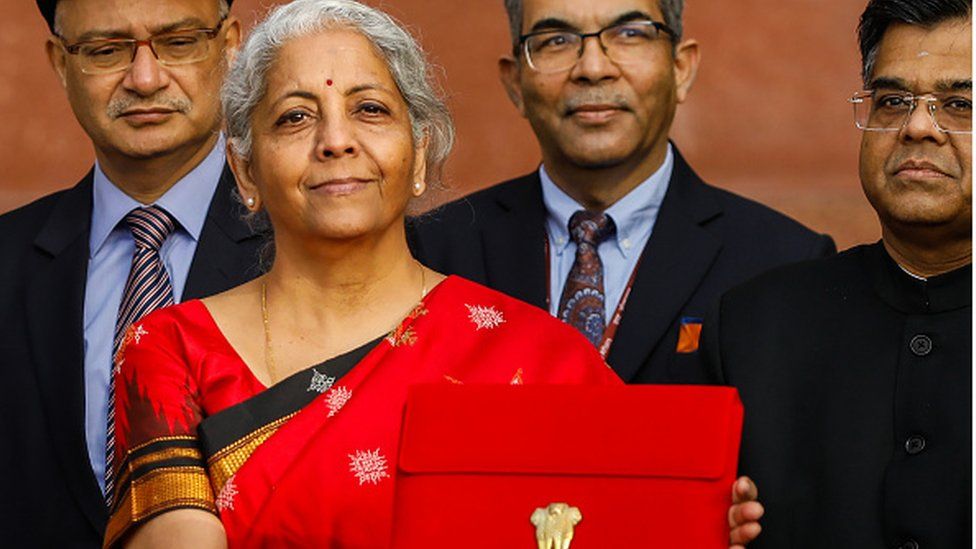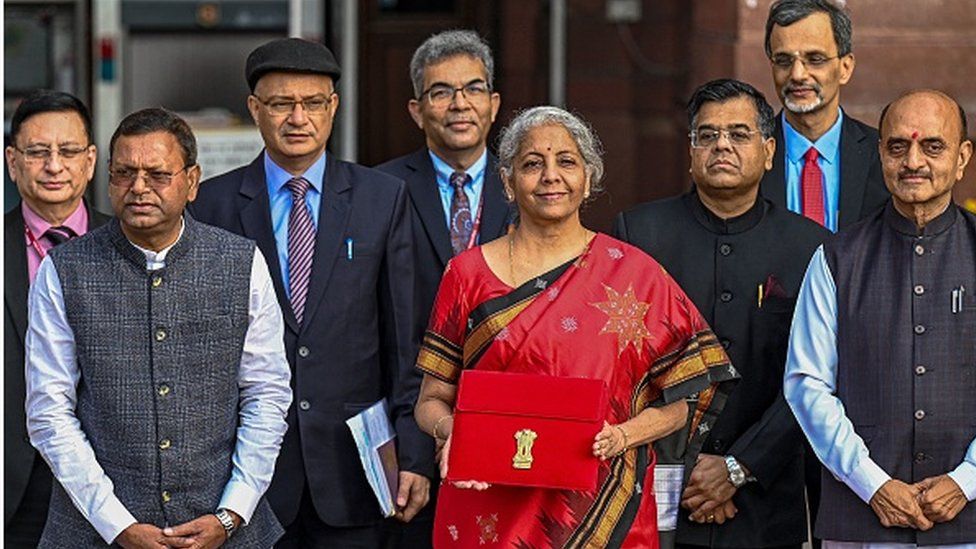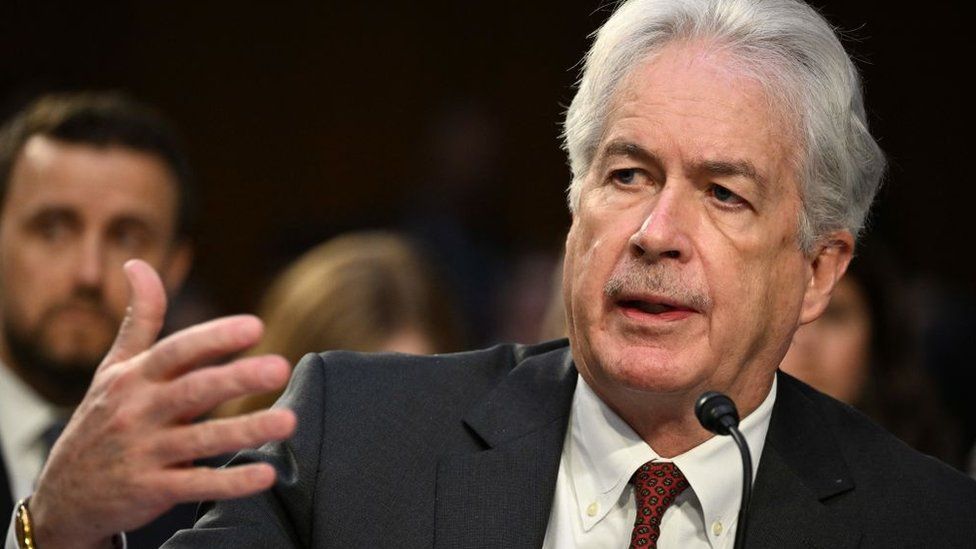India's final full budget before the general election next year saw a sharp increase in capital spending, income tax relief for the middle class, and initiatives to promote financial restraint.
Five important lessons from the budget, according to Nikhil Inamdar of the BBC:
India's overall capital expenditure saw a sharp increase of 33 percent, which was slightly less than the 35.4 percent increase budgeted last year, in line with the government's increased focus on building roads, highways, and power plants since 2014.
But at $122 billion, it represents a threefold increase over capital expenditure in 2019.
$24 billion was the largest amount of money ever spent on railroad projects.
Nirmala Sitharaman, the finance minister, also announced funding for the development of 50 new airports, aerodromes, and heliports to enhance regional connectivity and an increase of 66 percent to about $10 billion in spending on projects for affordable housing. .
According to the government, it aims to cut the fiscal deficit, or the difference between what it earns and spends, by 0.5 percent, from 6 point 4 percent in 2022–2023 to 5 point 9 percent this year.
This will be accomplished by raising overall spending at a moderate 7 percent rate, which analysts warn could be difficult in a year leading up to an election.
The finance minister, however, reaffirmed her dedication to achieving the medium-term target of further reducing the deficit to under 4% by 2025–2026.
India's fiscal deficit reached a record high of 9.3 percent in 2020–21 as a result of increased government spending on free vaccines and assistance programs for the underprivileged during the COVID-19 pandemic.
The government has announced tax relief measures for India's sizable middle class in advance of important elections in a number of states this year and the general elections in 2024.
For citizens who have chosen a new tax system set to take effect in 2020, this includes raising the personal income tax threshold.
If they transition to the new system, Indians who make less than 700,000 rupees ($8,500, £6,900) per year will no longer be subject to income tax.
Additionally, the top rate of personal income tax in India has been effectively decreased from 42 percent to 39 percent.
The action will put money in people's hands at a time when inflation has been eating away at their disposable incomes, which is expected to increase consumption.
Even though people could continue to use the old system, the finance minister stated that the new tax system, in which people cannot deduct their investments, will be the default.

The budget provides some relief for the middle class, but it does little to raise the conditions of India's most helpless citizens. During a period of high unemployment and irregular wage payments to workers, funding for India's rural jobs program, a crucial social buffer, has been reduced by more than 30%.
Additionally, the government has ended a free food program from the Covid era, cutting its overall food subsidy bill by close to 30% from the revised estimates from the previous year.
The amount spent on providing farmers with fertiliser subsidies has also decreased by more than 20%.
But there is good news for small businesses. According to the finance minister, over 3,400 legal provisions have been made less punishable and 39,000 company compliances have been reduced.
Over half of India's 1,536 business-related laws carry imprisonment provisions, according to a report from last year, which claimed that India suffers from "regulatory cholesterol.". .
India is currently ranked 63rd out of 190 economies in the World Bank's ease of doing business rankings after experiencing gradual improvements. .
In 2023, India's economy will still be a relative bright spot with a third of the world's economies on the verge of a recession following two pandemic years.
Although the GDP goals for the year have been slightly lowered, India is still anticipated to continue leading the world in major economy growth for the second year in a row.
According to the government's economic survey, growth is probably going to be between 6 and 6 point 8 percent.








